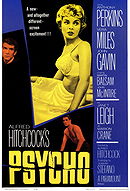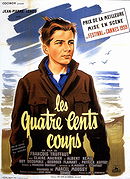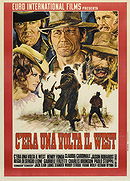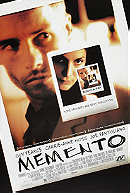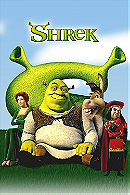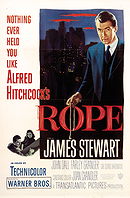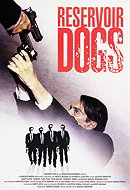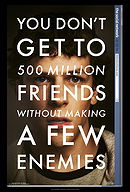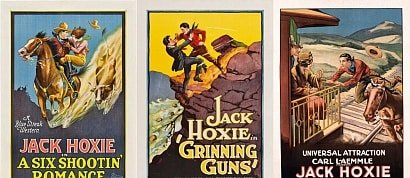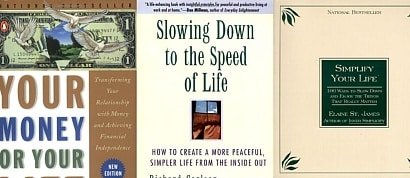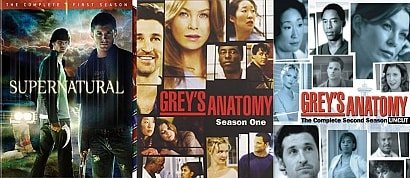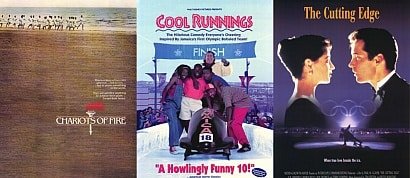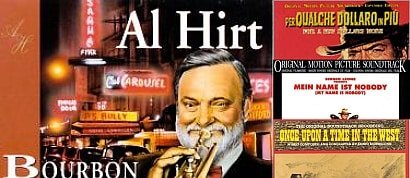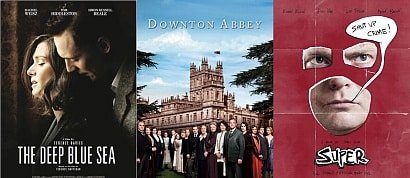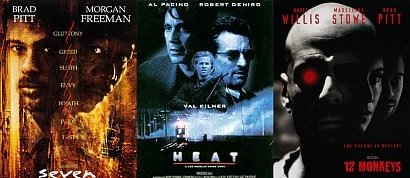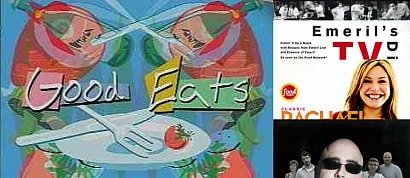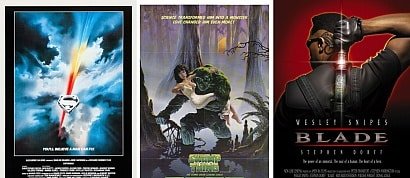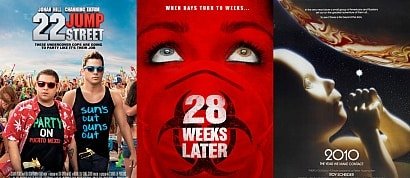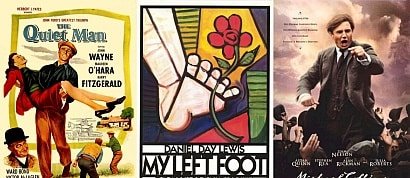thescriptlab's Top 10 Movies That Broke the Rules
Sort by:
Showing 10 items
Decade:
Rating:
List Type:
Night of the Living Dead (1968)
What rule did Night of the Living Dead not break? First and foremost, the film cast Duane Jones, an African American man, as the lead in the horror flick. With the rest of the cast being Caucasian, this casting decision had the potential to be controversial. However, something else overshadowed any discussion of casting. The film, directed by George A. Romero, shocked audiences all over America in 1968. Blood. Guts. Violence. Romero pushed the boundaries of American culture with his gruesome depictions, and the relatively naive audiences of the time did not like it one bit. An article from Variety shows the outrage of the time calling the film “pornography of violence.” They went on to say that the film “casts serious aspersions on the integrity and social responsibility of its Pittsburgh-based makers” and raises doubts “about the future of the regional cinema movement and about the moral health of filmgoers who cheerfully opt for this unrelieved orgy of sadism.” Unrelieved orgy of sadism. Ouch. While the film was massacred by most critics, since its release it has garnered a huge cult following. Not only that, but it has the honor of being added to the Library of Congress’ film registry and has been deemed as greatly influential in defining the horror genre. The film has produced many imitations, and has defined a sub-genre within the horror world. After decades of cinematic re-releases, the film has grossed over $12 million domestically and $18 million internationally. Not bad for “pornography of violence.”
moviebuff's rating:


Pulp Fiction (1994)
I know that you are thinking. Quentin Tarantino and Non-Linear structure. While the film is famous for the non-linear structure, I wouldn’t necessarily say that is the aspect of Pulp Fiction that breaks the rules. Sure it’s unconventional, but if you took the events of the film and put them in order chronologically, it follows the traditional screenwriting sequence breakdown. No, much more controversial than the structure of Pulp Fiction is the dialogue. It’s one of Tarantino’s trademarks. Dialogue. And lots of it. Not only is the film famous for it’s “eclectic” dialogue, but the amount of it. In fact, the Pulp Fiction script boasts pages upon pages of just dialogue- a huge screenwriting “no-no”. But, with Tarantino’s touch, it worked... not only that, it thrived. Pulp Fiction considered one of the most influential modern films ever made (not to mention, it’s also one of the most quote-able).
moviebuff's rating:


Psycho (1960)
Alfred Hitchcock is a gutsy man. His risks and propensity to deliver great stories has made him one of the most celebrated filmmakers of all time. In 1960, Hitchcock put out a little film called Psycho. And for the audience of the time, he took a huge risk. He killed off the main protagonist at the end of the first act. The film itself is based on the book of the same name by Robert Bloch. The screenwriter of the film, Joseph Stefano, recognized how Bloch played with the expectations of readers in his book. Stefano utilized this technique, killing off Marion Crane (Janet Leigh) half way through the film. It was a shocking turn of events, and it took the world by storm. In fact, the shower scene of Marion’s death has become one of the most famous in all of film history. But most of all, this plot point helped create the unpredictable and unconventional reputation that has made Psycho one of the most beloved films ever made.
moviebuff's rating:


The 400 Blows (1959)
The French film directed by Francois Truffaut, The 400 Blows, tells the story of an adolescent boy in Paris. The film was released to much critical and commercial acclaim. However, its true legacy is that it marked the beginning of the French New Wave movement in film. The film is vibrant and visually pleasing. Not only that, but just as the French New Wave movement, The 400 Blows rejects traditional cinema structure. While a bold move at the time, The 400 Blows set the paving stones for the likes of Jean-Luc Godard, Eric Rohmer, Jacques Rivette, and Claude Chabrol. Not only did the film break the traditional expectations of film structure, but it did so while winning numerous awards, including Best Director at the Cannes Film Festival.
Once Upon a Time in the West (1968)
I suppose one would have to define success when considering Once Upon a Time in the West. Initially, Sergio Leone’s epic spaghetti western was a financial flop. It was also met with mostly negative critical response when released in the United States in 1969. However, since then the film has been acknowledged as a masterpiece. Directors such as Martin Scorsese, George Lucas, and Quentin Tarantino have all spoken about the influence thatOnce Upon a Time in the West has had on them. The film breaks two main rules in cinema. First, there is very little dialogue. In fact, the first 10 minutes of the film is three men waiting for a train. With little action, the scene still proves to be engaging and visually gripping. Second, the film breaks the rules of the traditional western. It spans nearly three hours, challenges the classic “western hero”, and relies on a kind of mythical realism. The way Leone’s film pulls the audience into the story is still recognized and hailed today, making the film a certified classic. Influence even after 40 years? Now that’s success.
Memento (2000)
You saw this coming from the beginning, didn’t you? Christopher Nolan’s Memento is most famous for its non-linear structure. The film’s events unfold in two different narratives: one in color, and one in black and white. And the color sequences are in reverse chronological order. Not only is this a technique that is unconventional, but it adds to the film’s appeal. These sequences allow the audience to feel the same sense of confusion felt by the main character, Leonard (Guy Pearce). The film saw both critical and box office success, earning more than over $40 million. While the film was acclaimed as a whole, critics praised it for "its brilliant, innovative structure.” While only nominated for Best Original Screenplay at the Academy Awards, the screenplay went on to win 13 awards for Best Screenplay at various festivals.
Shrek (2001)
In a world dominated by Disney, Shrek came bursting on to the scene in the most irreverent way. Before Shrek, children’s animated films were expected to be a moral lesson wrapped up with a perfect bow of wholesomeness and naivety... then the Ogre arrived. Shrek instantly won audiences over with crude humor and adult themes. Suddenly, the landscape for children’s film changed. Within the same year, Monsters Inc. and Spirited Away were released, guaranteeing that animated films would never be the same again. Yes, Shrek broke the rules. It was impudent and cheeky in a genre known for traditional predictability. And even though Shrek proved to have an edgy sense of humor, the film somehow managed to do both: “tweak Disney's nose, provide a moral message to children, and offer viewers a funny, fast-paced ride.” Yes, Shrek went beyond “knowing your audience” and formed a sub-genre appealing to both children and adults alike.
moviebuff's rating:


Rope (1948)
It’s one of Hitchcock’s most experimental projects. Rope is a thriller based on a play of the same name. The film tells the story of two men who murder a friend, and then throw a party with the murdered man’s closest friends and family. The film breaks many rules of traditional cinema. First, Rope takes place in real time. Hitchcock also used editing techniques to make it seem as if the entire film was composed of a single continuous shot through the use of long takes. Not only that, but there are homosexual undertones in the film. As a highly controversial theme for the 1940s, the film was banned in many towns throughout the United States. In 1984, Roger Ebert wrote that “Alfred Hitchcock called Rope an 'experiment that didn’t work out', and he was happy to see it kept out of release for most of three decades.” But still, “Rope remains one of the most interesting experiments ever attempted by a major director working with big box-office names, and it's worth seeing.” Bold and tension-filled, Rope is still acclaimed today as one of the most interesting works of the famed director.
Reservoir Dogs (1992)
It’s a basic rule of screenwriting- you want to deliver certain aspects of the plot to the audience. If a film is about a school dance, you’ll want to show the school dance. If a movie is about a shark attack, you’ll want to show the shark attack. However, this is not so in Quentin Tarantino’s Reservoir Dogs. The film is about a diamond heist, yet it never shows it. Instead the audience sees the events before and after the botched heist. While this technique is unconventional, it adds to the film in many ways. It allows the audience to draw their own conclusion and put together what actually happened, which in turn makes the audience feel smart. Even more so, it adds to the feel of the film. It’s quick and gritty. And no doubt it paid off - the film came was a success, and is still considered by some today as the greatest independent film ever made.
moviebuff's rating:


The Social Network (2010)
It's screenwriting 101. Depending on the genre of your screenplay, it should always fall between 90 and 120 pages in length. However, the screenplay for 2010's The Social Network weighs in at a hefty 164 pages! I know what you're thinking. It's an Aaron Sorkin script. Aaron Sorkin can do whatever he wants, including writing a script that is traditionally considered way too long. It's true. If you did that, your script would probably see the trash can instead of the film can. However, Sorkin didn’t just rely on his clout to carry the film. No, The Social Network came out in a nearly flawless way, never feeling too long or forced. No doubt this has much to do with Sorkin's style of writing, his ease of navigating the structure of a screenplay, and the massive (and I mean, massive) amount of quick dialogue. Not only did The Social Network break one of the most basic rules of screenwriting, but it earned an Academy Award for it! Yes, Sorkin took home the Oscar for Best Adapted Screenplay, proving that great rewards await those willing to take risks.
moviebuff's rating:


People who voted for this also voted for
Western Movie Posters: Jack Hoxie
Leo Babauta's Non-Fiction Recommendations '08
My Favorite Music - Part I - Eminem
Mayer M Flaks
Favourite DVDs
Favourite DVDs
LIVROS - wanted
Olympics
- Instrumental Music
2013 Film Diary
Top films of 1995
MPB Pop Art
Czech music artist
Czech and Slovak music artist
Food Network
More lists from moviebuff
Nostalgia Critic - Top 11 Best Film Trailers
Steven Jay Schneider: 101 Sci-Fi Films
Total Film's 30 Superhero Movies You Didn’t Realis
101 Sequels You Must See Before You Die
Cinemassacre’s Top Ten Baddest Bad Guys
The X List: The National Society of Film Critics’
Neon Magazine's Essential Movies – Top 10 Irish Mo
 Login
Login

 1789
1789
 7.9
7.9
 7.9
7.9

